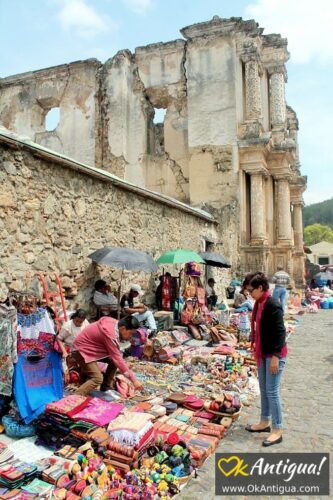 |
| Semana Santa procession (César Tián/Revue) |
 |
| By Elizabeth Bell http://www.antiguatours.net/ |
Introduced by the Spanish conquerors with the first procession for Corpus Christi in 1524, processions for Lent were first sponsored by city authorities and various guilds. Inspired by traditions from Seville, they evolved their own characteristics over the centuries. One major change is certainly the size of the floats (andas) carried by the members of the religious brotherhoods/sisterhoods (hermandades) throughout the streets of Antigua and surrounding areas.
The largest float in Antigua today is carried on the shoulders of 100 men. Carriers—referred to as cucurruchos and cargadoras—come in from all over the country for the processions for the Fifth Sunday, Palm Sunday, Maundy Thursday and Good Friday, which each have more than 6,000 carriers. The robes have changed since the 1800s as have the name of the hermandades, which were previously called cofradías. Children’s processions have also increased over the past few years. The spirit of Lent and Holy Week remain much the same—if not even more embedded in Antigua’s culture.
My favorite part of this season is carpet making. Residents make exquisite carpets out of dyed sawdust, pine needles, flowers and vegetables. If the procession is going to come by your house, your friends and family invite themselves over to make the carpet. While designs emerge out of the materials and many are spontaneous, there is no competition in carpet making. All carpets are of equal importance and not all carpet makers are Catholic. Completed moments before the procession walks over it, they are ephemeral works of art that last through people’s wonderful memories and what must be millions of photographs taken each year.
Most of the sculptures have been in processions since they were carved here in 1650...¨ please read it all, by Elizabeth Bell HERE
· Thanks to Revue Magazine, Guatemala´s English-language Magazine, HERE
· Thanks to Elizabeth Bell, Award winning historian, Books by Elizabeth Bell, HERE
· Thanks to César Tián, photo

























_-_James_Tissot_-_overall.jpg)













No comments:
Post a Comment